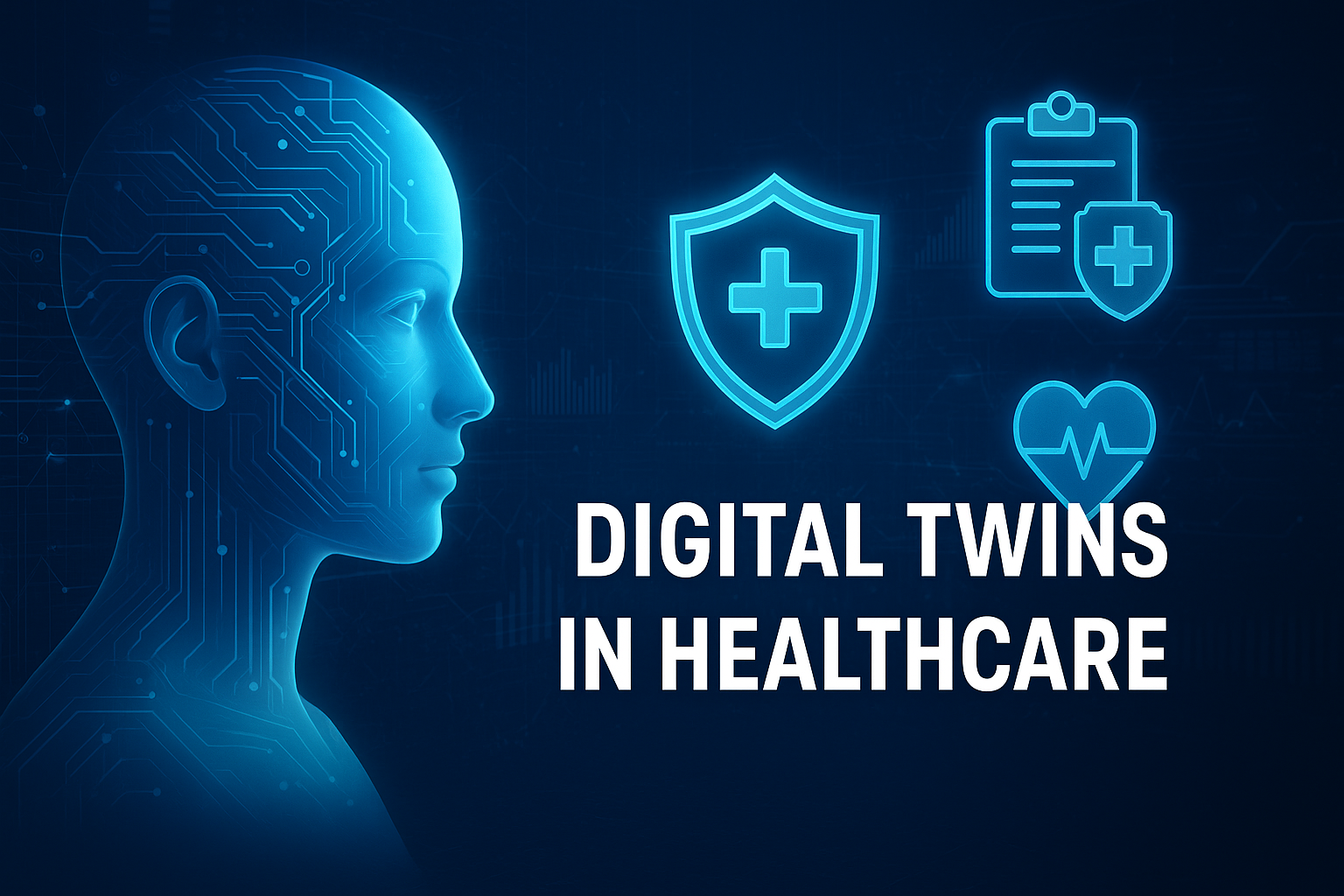Your cart is currently empty!
In a healthcare landscape defined by uncertainty, complexity, and skyrocketing data, one digital innovation is quietly redefining how smart organizations think: digital twins.
Born in aerospace and manufacturing, the concept of the digital twin—a virtual replica of a physical entity—has entered hospitals, pharmaceutical labs, and health systems with powerful implications. Whether modeling an ICU, tracking supply chains, or simulating individual patient journeys, digital twins offer a game-changing path to better decisions, lower costs, and greater resilience.
In short: if you’re not thinking about digital twins, your competitors probably are.

What Is a Digital Twin in Healthcare?
A digital twin is a virtual representation of a real-world system, asset, or process. It mirrors how that system behaves using live data, advanced simulations, and AI models. In healthcare, that “system” could be:
- A hospital or medical facility
- A supply chain or pharmaceutical manufacturing process
- A patient cohort or even a single patient
“Digital twins allow you to simulate, stress test, and optimize real-world conditions without risking real-world failure,” says Dr. Anika Jansen, Chief Data Strategist at Novus Health Systems. “It’s like having a practice round for your most critical operations—on demand.”

Use Cases: Where Digital Twins Make the Biggest Impact
1. Hospitals & Health Systems
Digital twins of entire hospitals can simulate bed occupancy, emergency response, and staff allocation in real time.
Example: During COVID-19, several European hospitals used digital twin models to test patient surge scenarios. This enabled smarter triage strategies and reduced ER bottlenecks.
According to Accenture, “Hospitals using digital twin modeling for operations saw an average 12% improvement in patient flow and a 9% reduction in operational costs.”¹
2. Pharmaceutical Manufacturing & Supply Chains
Pharma firms now create digital twins of production lines to predict bottlenecks, ensure regulatory compliance, and reduce waste. Coupled with AI, they can forecast material shortages before they happen.
Bonus: These systems can incorporate ESG metrics—tracking carbon footprint, water usage, and energy efficiency in real time.
3. Personalized Medicine & Patient Cohorts
This is the frontier that excites the most: a digital twin of a patient.
Using genomics, imaging, and wearable data, doctors can model how a specific treatment might impact an individual before administering it—reducing side effects and increasing efficacy.
“We’re entering an age where clinicians will ask: ‘What does the patient’s twin say?’ before prescribing,” notes Dr. Farid Al-Mansoori, Director of AI at MedGeneX.
Benefits That Go Beyond Buzzwords
While “digital twin” may sound like just another shiny tech term, it delivers real operational and strategic benefits:
1) Scenario Planning with Real-World Data
Run simulations for future events (e.g., pandemics, cyberattacks, demographic shifts) using live organizational data—not just guesses.
2) Increased System Resilience
Identify weak points in hospital systems, staff utilization, or production lines before they break down.
3) Enhanced Decision-Making
Executives can visualize the impact of changes (new suppliers, new care models, etc.) before rollout.
* Patient Safety & Treatment Personalization
Test potential treatments virtually, based on each patient’s biological and lifestyle profile.
4)Regulatory and ESG Readiness
Simulations can help meet HIPAA, GDPR, and FDA compliance while also modeling sustainability outcomes.
What’s Holding Companies Back?
Despite the promise, most healthcare organizations have not yet implemented digital twins. Why?
- Data Silos: EHRs, supply chain systems, and wearables often don’t talk to each other.
- Security Concerns: Sensitive patient data must be protected even in simulations.
- Leadership Hesitancy: Many C-suite leaders don’t fully understand the ROI potential.
- Talent Gaps: Building and interpreting digital twins requires AI-savvy talent.
“It’s a classic case of innovation inertia,” says Maya Reynolds, Principal at HealthTech Ventures. “But the early adopters are already reaping first-mover advantage.”
How to Get Started: A Digital Twin Readiness Roadmap
- Start with a Strategic Question
Don’t lead with tech. Lead with a business challenge. For example:
How can we reduce ER wait times by 15%? - Choose a Contained Pilot
Begin with one system (e.g., the radiology department) or one use case (e.g., predictive staffing). - Ensure Interoperability
Use platforms that integrate with EHR, supply chain, and IoT data sources. - Build a Cross-Functional Team
Involve clinicians, IT, compliance officers, and operations leads. - Invest in Explainability Tools
Use model-agnostic frameworks to ensure your simulations can be interpreted by non-data scientists.
Real-World Example: The Virtual ICU at Johnsbridge Medical
At Johnsbridge Medical Center, a digital twin of the ICU was created using real-time EHR feeds, nurse shift logs, and patient vitals. The system could simulate:
- Which patients were at risk of crashing overnight
- The impact of increasing nurse coverage by just 1 FTE
- Emergency response times under different shift patterns
The result? A 22% decrease in critical care transfers and $2.1 million saved in annual costs.²
Future Trends: Where Digital Twins Are Heading
- Population Health Twins: Simulate entire communities to model disease spread, health equity interventions, or disaster response.
- Genomic Twins: Integrate full genome sequencing into treatment models.
- AI Co-Pilots: AI will not just simulate but recommend next-best actions for care teams, based on twin simulations.
“The future of medicine won’t just be personalized—it will be pre-simulated,” predicts Dr. Elena Ma, VP of Innovation at AstraNova Bio.
Why Thought Leaders Must Pay Attention
Digital twins are not just an IT innovation—they are a strategic asset for C-suite executives, hospital directors, pharma innovators, and public health leaders.
By investing in digital twins, your organization can:
- Make smarter, faster, safer decisions
- Reduce waste, costs, and error rates
- Future-proof your operations for disruption, regulation, and innovation alike
Key Takeaways
- A digital twin is a virtual replica of a physical system, process, or person—fed by real-time data and simulations.
- Use cases in healthcare include hospital ops, supply chains, personalized medicine, and regulatory planning.
- While adoption is still early, first movers are already seeing major gains in cost savings, care quality, and innovation capacity.
- Healthcare executives must embrace digital twins as a leadership priority, not just a tech experiment.
Bibliography
- Accenture. The Future of Healthcare Operations: Digital Twin Implementation Guide. (2024)
- Johnsbridge Medical Systems. Case Study: ICU Optimization with Digital Twin Modeling. (2023)
- HealthTech Ventures. Digital Health Readiness Report. (2024)
- Interview with Dr. Anika Jansen, Novus Health Systems, Spring 2025.
- World Health Organization. AI and Healthcare Systems: A 2025 Review. (2025)
#DigitalTwins #HealthcareInnovation #SmartHospitals #AIinMedicine #FutureOfHealthcare #MedTech #PharmaOperations #HealthSystemLeadership #PersonalizedMedicine #ThoughtLeadership



Leave a Reply